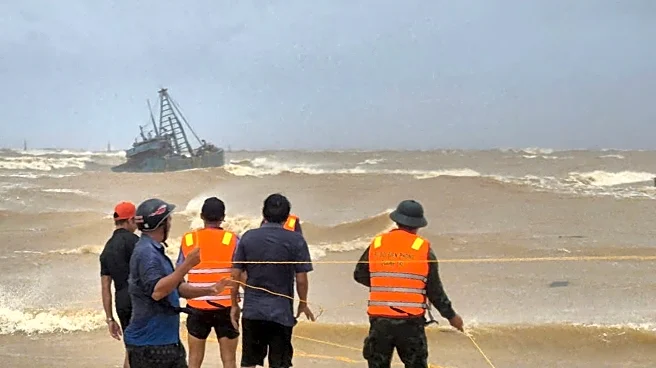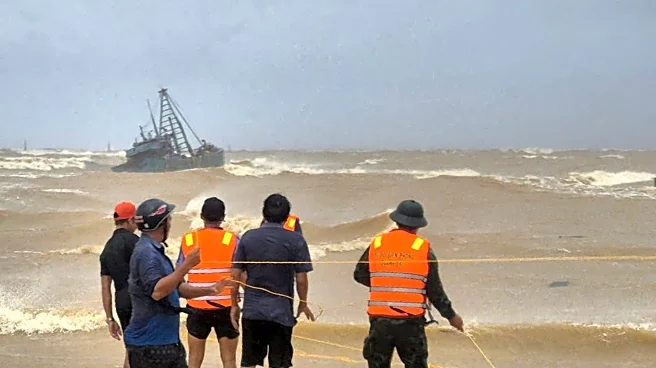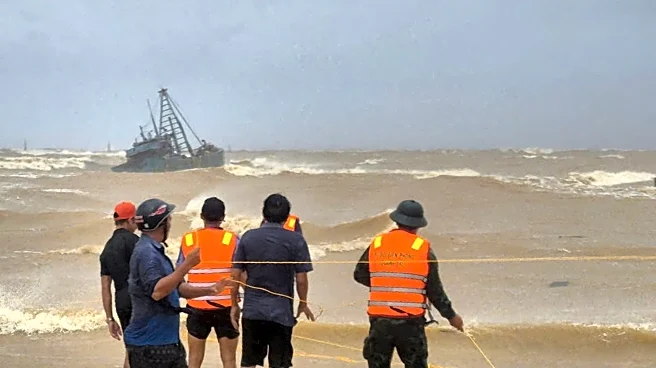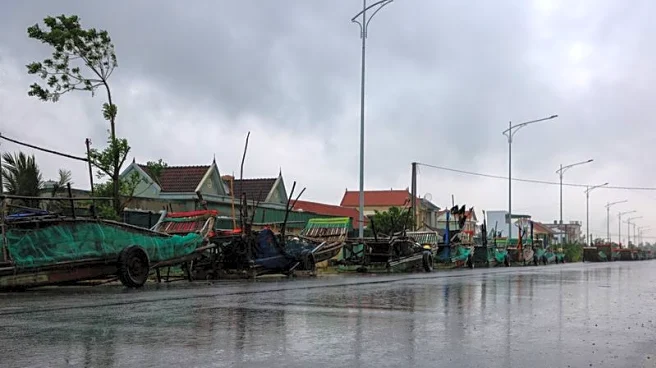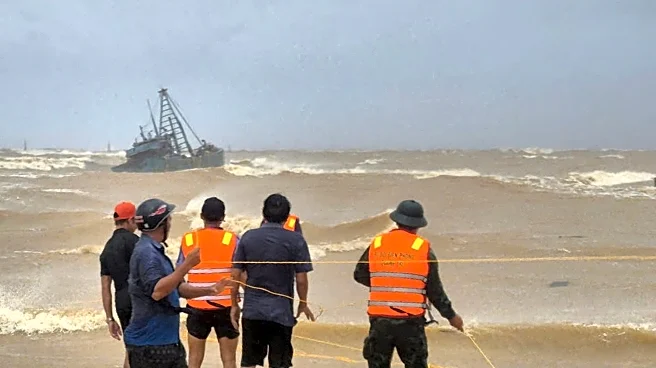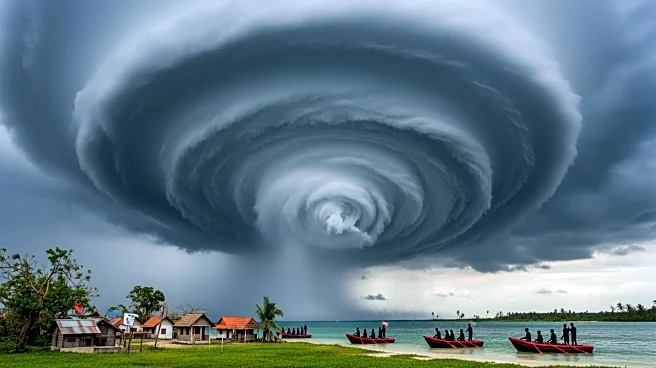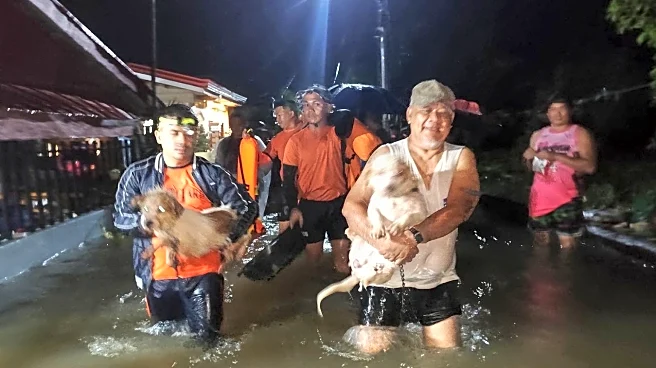What's Happening?
Typhoon Bualoi has struck Vietnam's northern central coastline, resulting in eight fatalities and 17 missing persons. The storm caused waves up to 26 feet high and significant damage to homes and infrastructure. In Quang Tri province, fishermen are missing after waves hit their boats. The typhoon has damaged hundreds of houses and flooded thousands of acres of crops. Authorities evacuated over 28,500 people and closed airports, leading to flight cancellations. The storm is moving towards Laos, with weakened wind speeds.
Why It's Important?
The typhoon's impact on Vietnam underscores the country's susceptibility to natural disasters, particularly typhoons originating from the South China Sea. The damage to homes and agriculture poses challenges for recovery and economic stability. The evacuation and airport closures highlight the logistical challenges in managing such disasters. The event may prompt discussions on enhancing infrastructure resilience and disaster response capabilities to mitigate future risks.
What's Next?
As Typhoon Bualoi moves towards Laos, Vietnam faces ongoing risks of flooding and landslides. Authorities are focused on rescue operations and restoring power and infrastructure. The government may need to implement long-term strategies to improve disaster preparedness and infrastructure resilience. International aid may be sought to support recovery efforts and address the immediate needs of affected communities.
Beyond the Headlines
The storm's impact on Vietnam's agriculture and infrastructure could have long-term economic implications, affecting local and international supply chains. The increasing severity of storms may be linked to climate change, prompting discussions on sustainable development and climate adaptation strategies. The event highlights the need for regional cooperation in disaster management and climate resilience.

